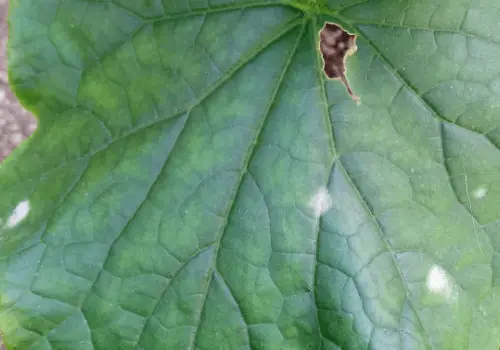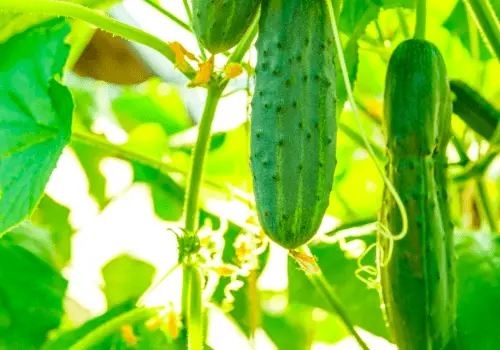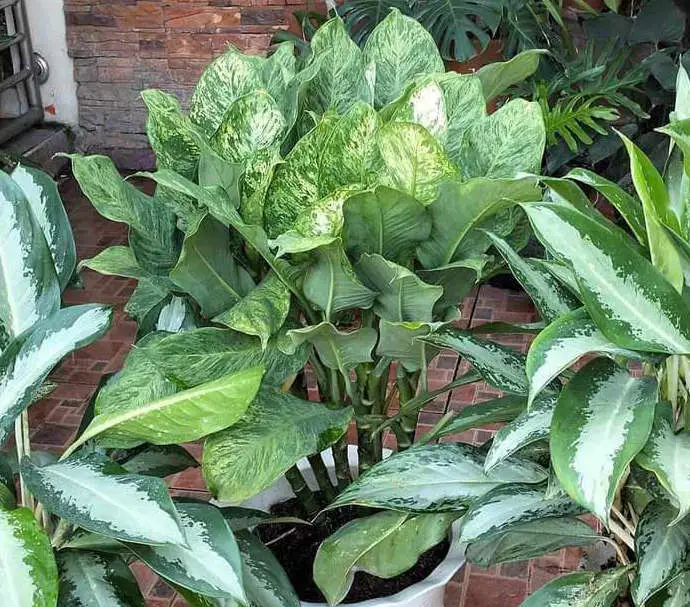Cucumbers are a refreshing addition to any dish, but sometimes these tasty vegetables can be afflicted with white spots. These spots can negatively affect the cucumber’s appearance and taste. Luckily, there are a few things you can do to get rid of them. Keep reading to find out what causes white spots on cucumber leaves and how to treat them!
The Causes of White Spots on Cucumber Leaves
The main cause of white spots on cucumber leaves is powdery mildew. This type of fungus thrives in warm, humid conditions and can quickly spread from one plant to another. The spores of the fungus are carried by wind or water and can infect cucumbers that are already stressed or have damaged leaves.
Once the fungus has taken hold, it will start to produce white, powdery growth on the leaves of the plant, which is why it’s called powdery mildew. The leaves will eventually turn white and may drop off the plant entirely. In severe cases, the cucumber plant may die.
Treating White Spots on Cucumber Leaves
If you think your cucumber plant has powdery mildew, you must act quickly to treat it. The fungus can spread rapidly and will soon affect the entire plant if left untreated.
To start, remove any affected leaves from the plant. This is to stop the fungus from spreading and to reduce the number of spores in the air. Destroy the leaves by burning them or placing them in a plastic bag and in the trash.
Next, you’ll need to treat the plant with a fungicide. There are many different types of fungicide available, so be sure to choose one that works on powdery mildew. I like neem oil, as it’s a natural fungicide that is also effective against other types of fungus and pests.
To use neem oil to treat powdery mildew, mix 1 teaspoon of neem oil with 1 quart of water. Spray the mixture onto the leaves of the plant, making sure to coat both the top and bottom of the leaves. Apply the treatment every 7-10 days until the fungus is gone.
Baking powder is another effective treatment for powdery mildew. Again, mix baking soda with water and spray it onto the leaves of the plant. You could also create a paste with baking soda and water and apply it directly to the affected leaves, although I prefer a less concentrated mix.
It can also be a good idea to drop the baking soda around the soil of the plant, as this will destroy any spores that are in the ground.
Once you’ve treated the plant, be sure to monitor it closely for any new signs of powdery mildew. The fungus can be difficult to get rid of completely, so it’s important to be vigilant in order to keep it from coming back.

Preventing White Spots on Cucumber Leaves
The best way to deal with powdery mildew is to prevent it from happening in the first place. Here are a few tips to help you do that:
1. Provide Air Circulation
The first step is to provide good air circulation around the cucumber plants. This can be done by spacing the plants properly when you plant them and by pruning any dead or dying leaves throughout the growing season.
Fungus thrives in humid conditions, so keeping plants too close together can create the perfect environment for powdery mildew to take hold. Spacing the plants properly will help to reduce humidity and prevent the fungus from spreading.
2. Water Early
Water the cucumber plants early in the day so that the leaves have time to dry before nightfall. Wet leaves overnight provide the perfect environment for powdery mildew to grow.
If you can’t water early in the day, make sure to use a soaker hose or drip irrigation system so that the leaves don’t stay wet for too long. The drip system is a lifesaver in this instance as you can water the plants without wetting the leaves or overwatering your cucumber.
3. Provide Direct Sunlight
Cucumber plants need at least 6 hours of direct sunlight every day in order to stay healthy. Powdery mildew thrives in shady, cool conditions, so providing plenty of sunlight will help to prevent the fungus from taking hold, as well as stop cucumber leaf yellowing.
If your garden provides lots of coverage, you may need to move the cucumber plants to a sunnier spot. Alternatively, you may need to remove some of the taller plants that are shading the cucumbers.

4. Remove Debris
Remove any dead leaves or other debris from around the cucumber plants. This includes fallen leaves, crispy/dry cucumber leaves, dead flowers, and even rotting fruit. All of this material can harbor powdery mildew spores and should be removed as soon as possible.
Keeping the area around the plants clean will help to prevent the fungus from taking hold. You may need to do this every few days, especially during wet weather.
5. Inspect Regularly
Be sure to inspect the cucumber plants regularly for any signs of powdery mildew. The earlier you catch it, the easier it will be to treat. You should also inspect any new plants before adding them to your garden. Powdery mildew can spread quickly and even cause holes, so it’s important to stop it from getting a foothold in your garden.
By following these tips, you can hopefully prevent powdery mildew from affecting your cucumber plants. However, if the fungus does take hold, be sure to act quickly to treat it before it has a chance to do too much damage.
6. Mildew-Resistant Cucumbers
There are a number of cucumber varieties that are resistant to powdery mildew. These include:
- Brickyard Cucumbers
- Beit Alpha Cucumbers
- Carolina Pickling Cucumbers
- Cucamelon Cucumbers
- Diva Cucumbers
- Dasher II Cucumbers
- Cool Breeze Cucumbers
- Cross Country Cucumbers
Planting any of these varieties will help to reduce the chances of powdery mildew taking hold in your garden.
Conclusion
White spots on cucumber leaves can be unsightly and affect the taste of these refreshing vegetables. In fact, the main cause of these spots is a fungus called powdery mildew. This fungus thrives in warm, humid conditions and spread throughout cucumber plants quickly.
If you think your cucumber plant has powdery mildew, remove any affected leaves and treat the plant with a fungicide. Be sure to monitor the plant closely for any new signs of the fungus and take steps to prevent it from spreading.
I hope this article was helpful in dealing with powdery mildew on your cucumber plants. Thanks for reading! Do you have any tips on dealing with this pesky fungus? Let me know in the comments below!
Tim is an avid gardener from the UK. He was the founder of PlantCarer.com from 2021 to Sep 2023. He sold PlantCarer.com to Aaron. He has since started his own business called Seed To Supper, which provides new gardeners all the materials you need in a box (pots, seeds, compost and instructions) to grow your own delicious and nutritious vegetables and herbs from start to finish – no garden required.






0 Comments